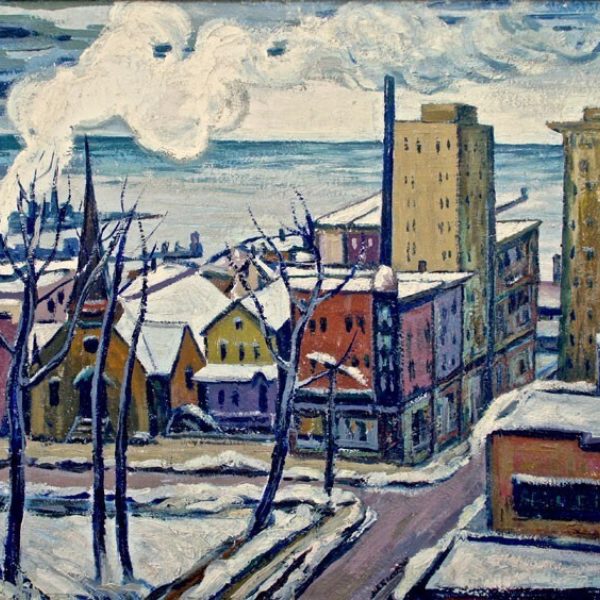Minnie Harms Neebe
b. 1873, Chicago, IL
Minnie Harms was born in Chicago 1873, the same year that her future husband Louis Alexander Neebe was born in Philadelphia. Louis was an artist, whose day job was in newspaper lithography, and the young Minnie assisted her husband printing color ads and cartoons. During that time, she began sketching and eventually studied art both at the School of the Art Institute (SAIC) and under Charles Hawthorne in Provincetown, Mass. In his classes, she often sketched fellow classmates instead of the model. Other influential teachers included Lorser Feitelson, Walter Ufer, Charles F. Brown, Ambrose Webster, and Wellington J. Reynolds. Minnie and Louis’s home and studio—at 1320 North Clybourn Avenue, then a working-class Italian neighborhood—was decorated over the course of their thirty-five-year marriage with objects from China, India, Mexico, and the West American Indians (though she never went to China or India). It also was a hub for progressive artists and poets of the day, visited by notables such as Carl Sandburg, George Bellows, and Leon Kroll—one of her teachers at SAIC who was associated with the Ashcan School of urban realism in New York. Neebe and her husband were both active in Chicago in the 1920s and 30s within a circle of radical artists who called her “Aunt Minnie.” She was a member of progressive artist organizations, including the Chicago Society of Artists, the Neo-Arlimusc (founded in 1926 by artist Rudolph Weisenborn to further interaction between art, literature, music, and science), and Chicago No-Jury Society of Artists.
She typically used vivid colors, and, as she explained in J. Z. Jacobsen’s 1933 book on art in Chicago, “The purely abstract in art occupies a most important place, although I always fuse it with the more realistic phases of my canvases.” Her 1930 oil in the Friedman collection, Waukegan, shows colorful row houses standing against a snowy white foreground with barren trees, and the bluish grey lake in background. Above, a billow of white smoke drifts across the horizon, bringing together city and nature, and conveying an unmistakably modern sensibility.
Lisa Meyerowitz
References
Bulliet, C. J. “Artists of Chicago, Past and Present, no. 9: Minnie Harms Neebe.” Chicago Daily News. April 20, 1935.
Hall, Michael D., and Pat Glascock. Great Lakes Muse: American Scene Painting in the Upper Midwest, 1910–1960. Flint, MI: Flint Institute of Arts, 2003.
Jacobsen, J. Z. Art of Today: Chicago, 1933. Chicago: L. M. Stein, 1932.
Neebe, Minnie Harms. Pamphlet file P-05775. Ryerson Library. Art Institute of Chicago. [2 items]
